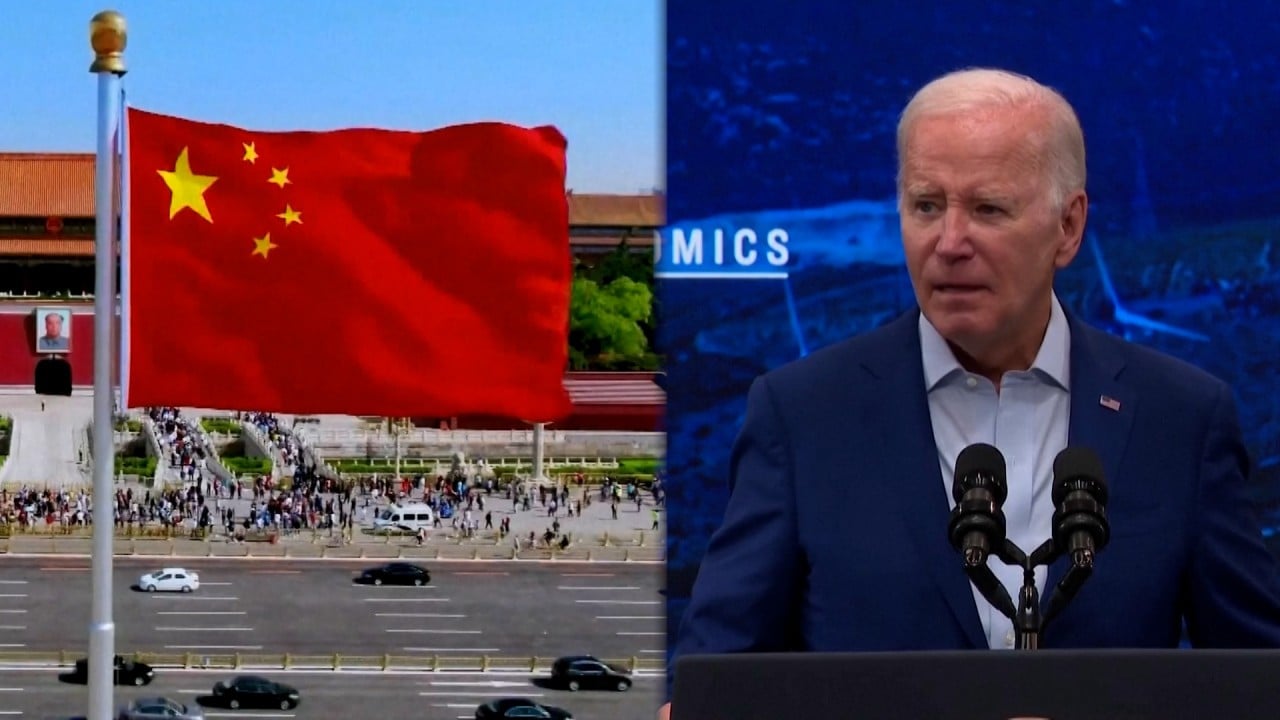
China’s tech hub to import more integrated circuits, steel itself against US sanctions after Huawei handset leap
- Shenzhen saw the value of its integrated-circuit imports fall sharply in the first half of the year, prompting local authorities to offer more support in a new three-year plan
- Beijing has high hopes for Shenzhen and its role in ensuring that China becomes technologically self-sufficient in the face of crippling US curbs on technology transfers
The hometown of telecoms giant Huawei and drone maker DJI has plans to boost its imports of integrated circuits and other hi-tech equipment, as the administration of US President Joe Biden could tighten curbs on Chinese access to advanced technologies.
Shenzhen, dubbed “China’s Silicon Valley”, aims to lift its import value of integrated circuits (ICs), a key component needed for local high-end industries, to 800 billion yuan (US$110 billion) by 2025, according to the city’s three-year action plan dated September 3 but only made available to the public a week ago.
That would mark a doubling of 2017’s imports, and is equivalent to about 29 per cent of the national import total last year.
The value of the city’s IC imports fell 17.7 per cent from a year earlier to 278.5 billion yuan in the first half of this year.
“We’ll provide support for the import of important equipment and key components, such as semiconductors, integrated circuits, and ultra-high-definition displays,” the government plan says.
Measures mentioned include one-stop service and assistance in applications for subsidies.
Shenzhen, also home to electric-vehicle giant BYD, internet giant Tencent and a variety of tech start-ups, is one of the Chinese cities most affected by the US’ high-end chip ban announced in October. Beijing hopes Shenzhen will help China become technologically self-reliant.
The US Department of Commerce put Huawei and several Shenzhen-based firms, including IC manufacturer Pengxinwei and facial-recognition product supplier Cobber Information Technology, on its so-called entity list, barring them from access to American technology, components, funding and markets.
Shenzhen has ambitious plans to develop its semiconductor industry, with tax incentives and other subsidies offered for local research and development centres, and also cooperation with Hong Kong in the pipeline.
Integrated circuits account for one of the seven import categories – along with bulk energy commodities; mid- to high-end consumer goods; gold and jewellery; pharmaceutical products; agricultural items; and transport vehicles – encouraged by Shenzhen in the action plan.
The municipal government aims to lift its total import trade volume to 1.8 trillion yuan by 2025 from 1.48 trillion yuan last year, and it plans to account for half of all trade volume from Guangdong province by then.
Shenzhen’s trade value hit a record high of 3.67 trillion yuan last year, up 3.7 per cent from 2021. It has been mainland China’s top export city for 30 consecutive years, and the third-largest importer.
The city also plans to buy more from members of the Regional Comprehensive Economic Partnership (RCEP), which includes 10 Southeast Asian countries, Australia, New Zealand, Japan and South Korea.
Shenzhen said that about 45 per cent of its imports would be from the bloc by 2025, according to the action plan.


